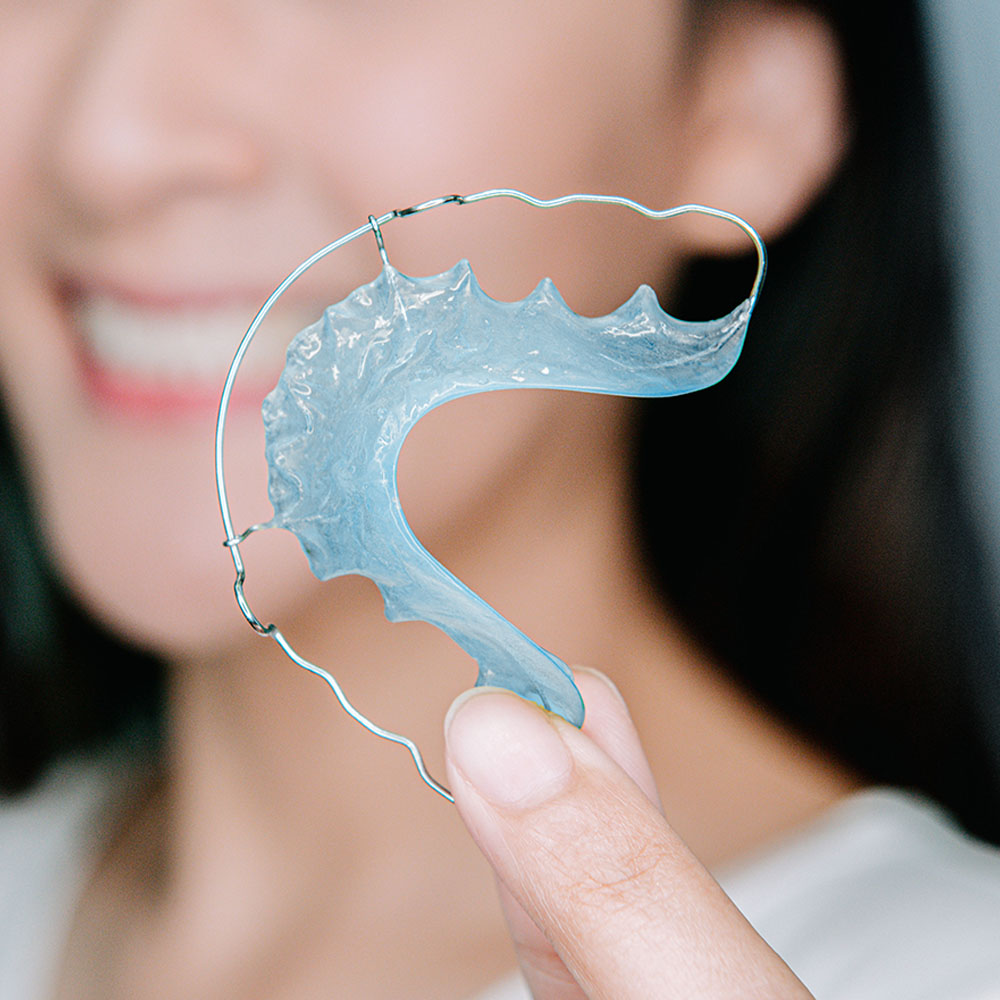How Often Should I Wear My Retainer After Orthodontics?
 Dr. Kellyn Hodges, who serves patients from Philadelphia, Bala Cynwyd, and Bensalem, PA, offers orthodontics to correct malocclusion problems such as crooked teeth and a misaligned bite. Orthodontic techniques include braces, which use wires and brackets to shift the teeth and jaw into proper alignment, and Invisalign, which uses clear plastic aligners. Orthodontic treatment corrects the bite in an average of 12 to 18 months.
Dr. Kellyn Hodges, who serves patients from Philadelphia, Bala Cynwyd, and Bensalem, PA, offers orthodontics to correct malocclusion problems such as crooked teeth and a misaligned bite. Orthodontic techniques include braces, which use wires and brackets to shift the teeth and jaw into proper alignment, and Invisalign, which uses clear plastic aligners. Orthodontic treatment corrects the bite in an average of 12 to 18 months.
Patients must use a retainer to preserve treatment results when orthodontic treatment is complete. Many patients ask Dr. Hodges, “How often should I wear my retainer after orthodontics?” Here, Dr. Hodges informs patients about typical retainer use after orthodontic care and its benefits.
Why Do I Need a Retainer After Orthodontic Treatment?
Many people assume that orthodontic treatment results are permanent. Unfortunately, that is not always the case. The teeth and jaw naturally shift and change position over time. A retainer holds the teeth and jaw in proper alignment to support and preserve orthodontic treatment results. Without a retainer, the teeth and jaw may shift to their pre-treatment position, requiring patients to undergo additional orthodontic care.
How Often Should I Wear My Retainer After Orthodontics, Braces, or Invisalign?
Dr. Hodges provides patients with explicit retainer instructions when they complete orthodontic treatment. Although retainer use may vary slightly for each patient, most can expect to wear their retainer day and night for the first one to four months. Patients should remove their retainer while eating and brushing their teeth during this initial stage of retainer use. This time allows the teeth and jaw to further settle into their new position.
After using their retainer day and night for the first several months, patients are generally instructed they no longer have to wear their retainer during the day. However, patients must continue to wear their retainer while sleeping. Nightly retainer use should continue for a lifetime.
Retainer Use for Braces vs. Invisalign
Patients frequently ask if retainer use differs for braces patients versus those who use Invisalign. Invisalign and braces provide very similar results within a nearly equal timeframe. No matter what orthodontic technique a patient chooses to treat malocclusion problems, retainer use should be the same.
Benefits of Retainer Use
Some patients are apprehensive about retainer use because they look forward to the freedom of completing braces or Invisalign treatment. Fortunately, retainers are discreet and convenient dental appliances. Some of the most notable benefits of orthodontic retainers include:
- Easily removable for eating, oral hygiene practices, and special occasions
- Discreet appearance
- Ease of care
- Preservation of orthodontic treatment results
- Prevention of the need for orthodontic retreatment
Retainer Care
Proper appliance care is essential because patients can expect retainer use to be lifelong. Proper care protects retainers, minimizes the risk of dental complications, and prolongs the appliance’s lifespan. Good retainer care practices include:
- Cleaning the retainer daily with soap and warm water
- Removing the retainer when eating
- Soaking the retainer when out of the mouth for an extended period
- Storing the retainer in a sterile protective case
Contact Us
Dr. Kellyn Hodges offers orthodontic treatment to provide patients with a healthier, straighter smile. We encourage individuals with questions about braces, Invisalign, or retainers to contact our orthodontic practice and schedule an appointment at their earliest convenience.


